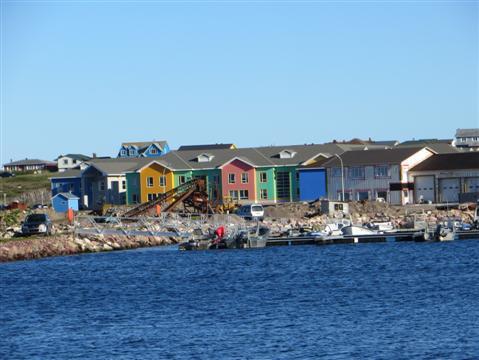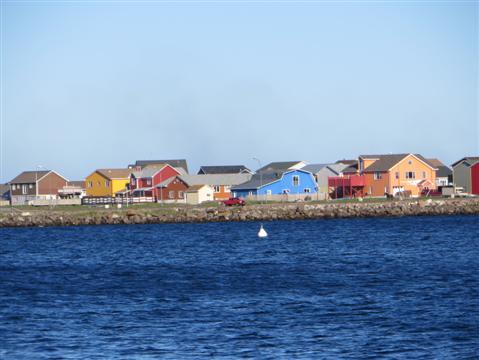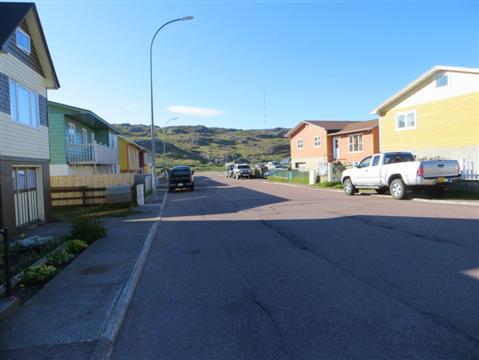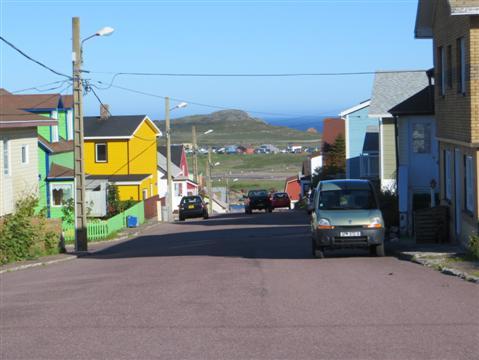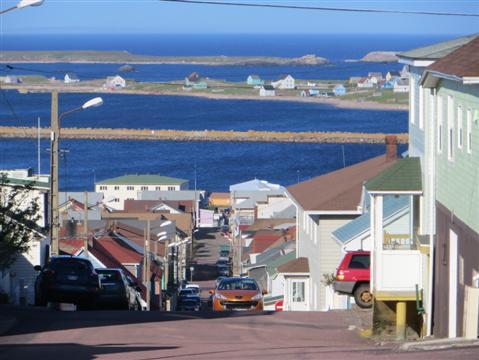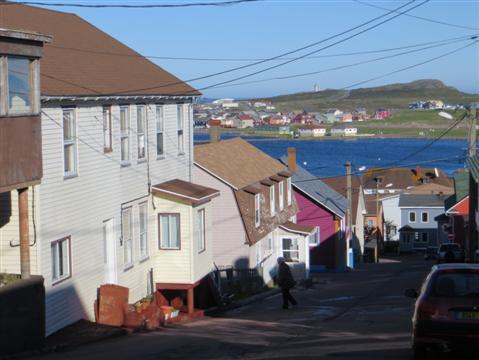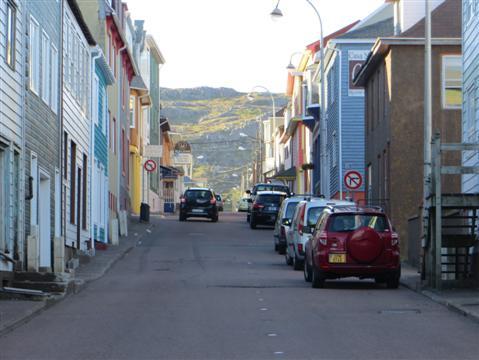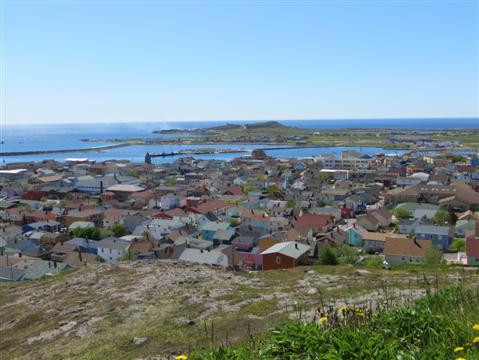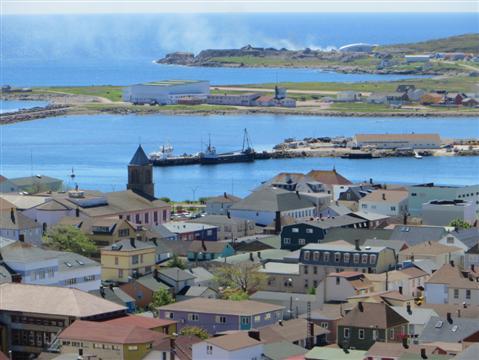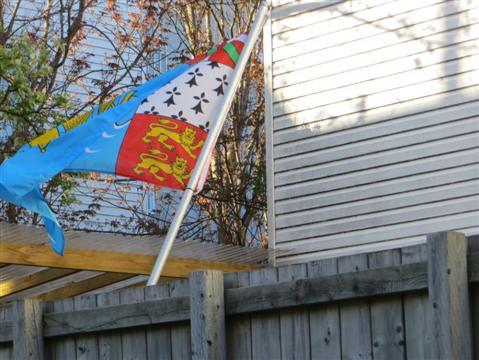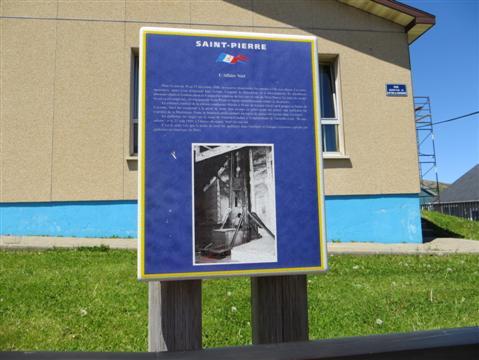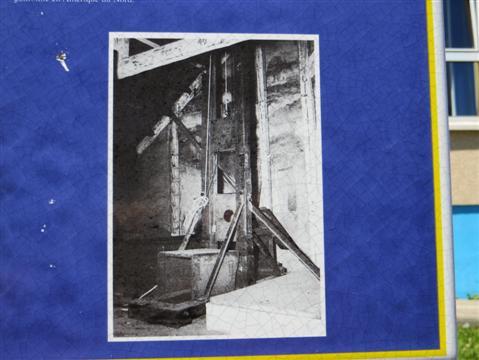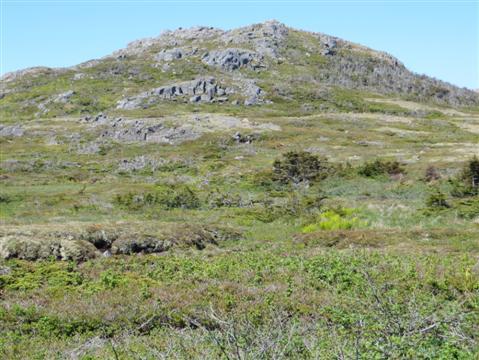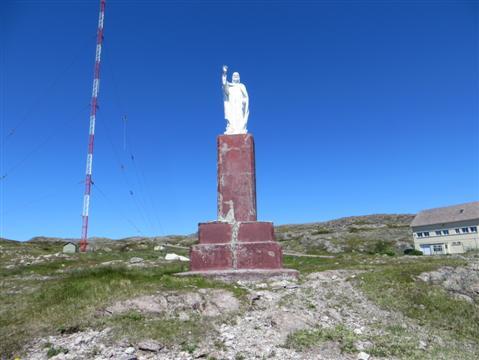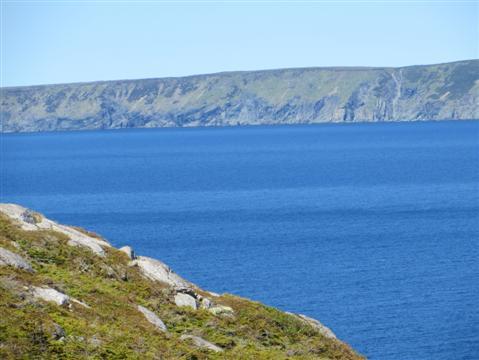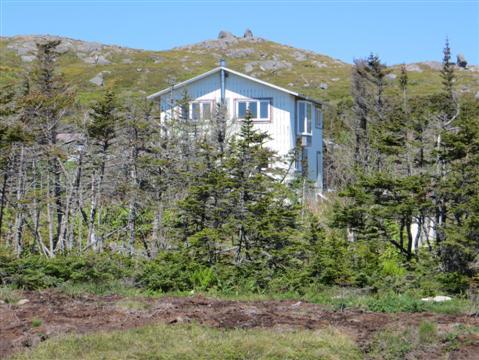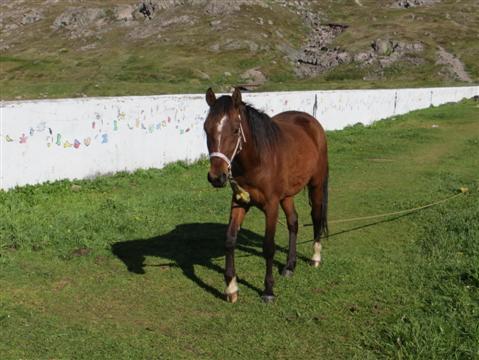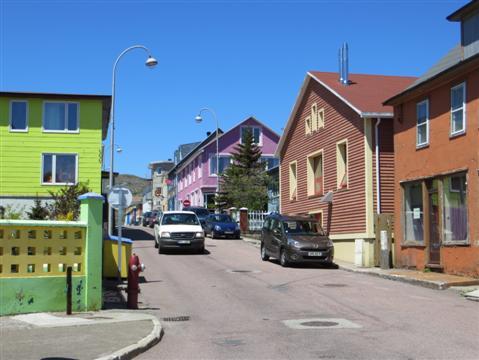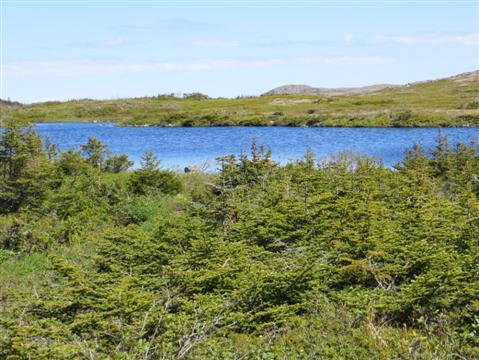Back in the halcyon days of old, New France -- France's North American Empire -- covered 3,088,817 square miles, only 550,000 or so less than today's China. Then Britain and France began fighting a host of wars over the vast tract of land that rightfully belonged to neither -- those tragic First Nations!
As usual the Brits kicked the Froggies' arses. Terre Neuve became Newfoundland, Nouvelle Ecosse became Nova Scotia, Nouveau Brunswick became New Brunswick, Quebec stayed Quebec but became part of British Canada -- and today, France's North American empire covers all of 93.4 square miles, about one and half times the size of Washington, D.C., comprising the islands of St. Pierre et Miquelon, some 6,500 people all told.
St. Pierre
They lie just 16 miles off the southern coast of eastern Newfoundland, a mere hour or so by Le Cabestan, the public ferry from Fortune on the Burin peninsula. But here's the rub: the only public minivan from St. John's, Newfoundland's capital, to Fortune arrives too late to catch the ferry to St. Pierre in one day, and leaves too early to take you to St. John's the same day you arrive back from St. Pierre.
So not wishing to seek my fortune in Fortune by wasting two days, I consign my overland-or-by-sea-public-transport Canadian odyssey to the temporary rubbish bin and take Air St. Pierre's nifty little ATR-42 for the 45-minute flight from St. John's.
Another town view
A lovely white drug-sniffing Labrador greets us in the customs hall, but I now know better - after an earlier incident in the Falklands - not to interfere with the forces of law and order by hollering 'Hey, Rover, here, boy' and trying to pet him on the conveyor belt. Very verboten.
As usual with my travel expectations, St.Pierre is not in the least bit like the flat island I saw in my mind's eye. It's very hilly and craggy, very green but with virtually no trees. The pretty little town clambering up the slopes around the harbour glows with neat wooden houses painted bright yellow, green, red, orange, blue, violet, and a myriad variations in between.
St. Pierre street
Another street
A particularly jagged triangular crag above town is called Sugar Loaf, half-jokingly I suppose, after Rio's famed landmark. Closer to the water's edge are several restaurants serving proper French food, with mouth-watering gâteaux, from which Yours Truly has just partaken too liberally and is about to chunder.
The islands, with their economy based on rapidly decreasing Atlantic fish stocks, knew a brief period of glory when the 1919 U.S. Volstead Act introduced prohibition. Canada could no longer export alcohol to the U.S., but it could to France - and St. Pierre and Miquelon are part of France.
St. Pierre town
At the receiving end here Al Capone and Co. set up business on St. Pierre, snapping up all the liquor that the Bronfman-owned Northern Trading-Northern Export Company could bring in, nearly sinking the islands beneath the weight of the barrels and bottles.
The islands benefitted enormously from this new role of massive alcohol re-distributor, and a huge cod storage facility was converted into your friendly neighbourhood off-licence, the neighbourhood being the whole frigging U.S. of A.
St. Pierre town
Al Capone is said to have slept here often, and the Robert Hotel is said to display his straw boater. When I turn up the boater has flown. The owner for reasons unknown has stuffed it in his Mum's house, or so they say.
The good old days for St. Pierre ended with the repeal of prohibition in 1933. The islanders are said to have organised a mock funeral to mourn their loss, then went back to the much less lucrative fishing.
Another street scene
Today Yours Truly walks in the bootleggers' footsteps and into the pretty little wooden building that 90 years ago served as Northern Trading-Northern Export Company's headquarters. Today it is the Heritage Museum with artifacts showing the life and times of the islands. There's a section showing bottles and such from the days of prohibition.
But then there's also a section on early medical facilities with a fine collection of ancient bedpans, fortunately not in the original state that the last users left them in. Take your pick. Unfortunately, no pictures allowed in the museum.
View of town from the belvedere on a bluff
The islanders have no pretensions of grandeur, unlike Charles de Gaulle who visited them as president of France, after whom the small main square opposite the large waterfront post office is named. They know they're barely even a rock. Their unofficial motto is 'Je suis attaché a mon caillou' - I'm attached to my pebble.
Another belvedere view
They're proud of their origins, Basque, Breton and Norman, and the flag of this French overseas self-governing territory comprises a column of all three regional flags near the staff - the Basque white and green crosses on red, the black on white of Brittany, and Normandy's two gold leopards on red.
On the larger blue segment a representation in yellow of the Grande Ermine, the ship that brought Jacques Cartier to St. Pierre on June 15, 1535, floats on a child's idea of waves.
St. Pierre flag
By the little cathedral a statue of a ship's captain in his boating gear stands over a memorial to 26 island fishermen lost at sea in three disasters over the last 70 years.
Another plaque is quite morbid. By what is now the Île aux Enfants (Children's Island) kindergarten, a blue plate with the photograph of a guillotine recounts the tale of Auguste Neel, who with a buddy in 1888 killed a boat captain in a robbery attempt, then dismembered the body to try and hide the crime.
The local authorities felt an example had to be made, the prosecutor sought and got the death penalty, and French law stipulated that a condemned man had to be guillotined near the scene of the crime. Of course, St. Pierre had no such facilities. So the bureaucrats had an old blunt guillotine in Martinique boxed up and shipped over.
Site of the guillotining
In another 'of course,' St. Pierre - of course - had no executioner. So the authorities got an ex-convict to perform the honours but didn't determine who should give the order to pull the lever. After a pause that must have seemed to last centuries, Neel himself shouted at the guy to bloody well get on with it.
The dull blade sent bits of flesh flying all over the place, the community was horrified, ostracised the ex-convict who left for France, and the prosecutor vowed never to seek the death penalty again.
Guillotine close-up
It was the first and only execution by guillotine in North America, and the morbid sods now seem proud of that fact, as they've got another plaque to it on a bluff above the town, and a guillotine resides by a stairway in the town's Musée de l'Arche. It's not the malfunctioning one but another sent from Paris in case they need it again - unlikely given that France outlawed capital punishment in 1981.
Behind the little town, the 'highlands' soar a couple of hundred feet or so above St. Pierre, which at 9.7 square miles is much smaller than Miquelon although it houses nearly the whole population.
St. Pierre highlands
The road and paths climb sharply to several vantage points, including the one with the sign pointing down to the site of the guillotining, and another with a stone Jesus looking supremely bored. But it's somewhat marred, necessarily I assume, by two lofty red meccano-type towers that keep the islands communicating with the rest of the world.
Jesus and the antennae
There are scatterings of dwarf pines, other low vegetation, and grasses and moss in various shades of glorious green on the slopes leading to the grey-whitish granite crags at the top.
Another highland view
A host of little lakes with yellow lily buds sparkle, and the views are superb - over to a couple of yachts and the Burin peninsula on one side, and across to the nearer cliffs of Langlade, the southern part of Miquelon, on the other. The scenery is all rather reminiscent of the Scottish highlands or Ireland.
Langlade from St. Pierre
There's hardly a soul about. One local passes with his dog, iPod buds stuck in his ears - the guy's, not the dog's, that is. A lady chugs past on a jog with iPod buds stuck in her ears. Now a youth cycles past with iPod buds stuck in his ears.
A house in the highlands
A beautiful brown horse housed by a reservoir near my B&B with whom I've made friends trots over on my way back for the regulation stroking of the white patch on his forehead. At least he hasn't got iPod buds stuck in his ears.
St. Pierre's colourful buildings
______________
By the same author: Bussing The Amazon: On The Road With The Accidental Journalist, available with free excerpts on Kindle and in print version on Amazon.
